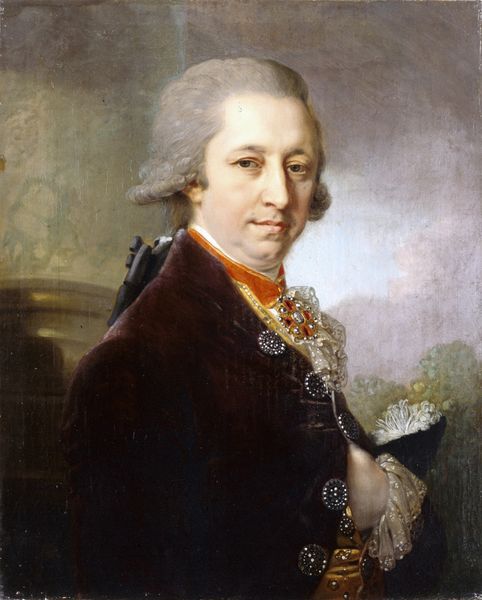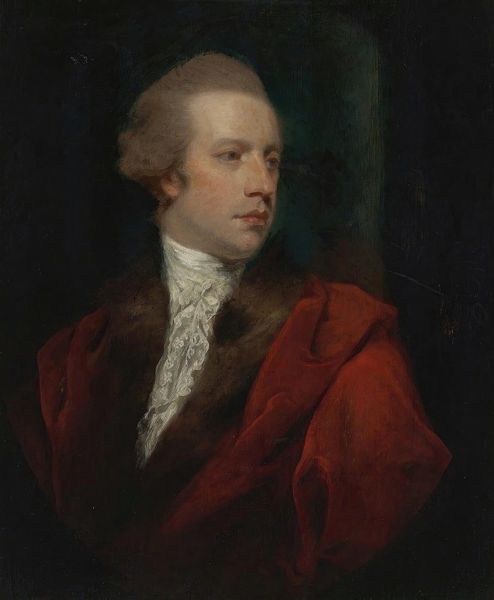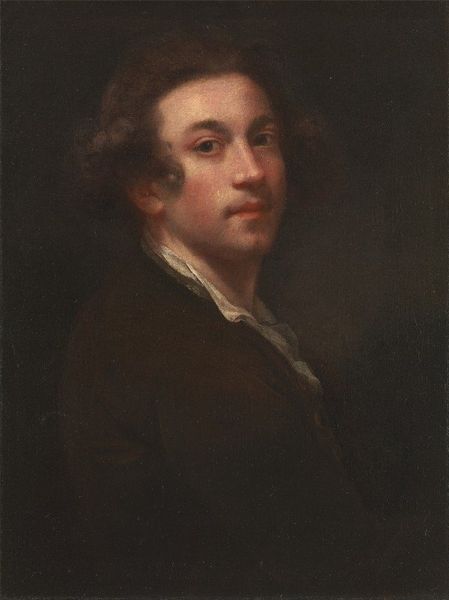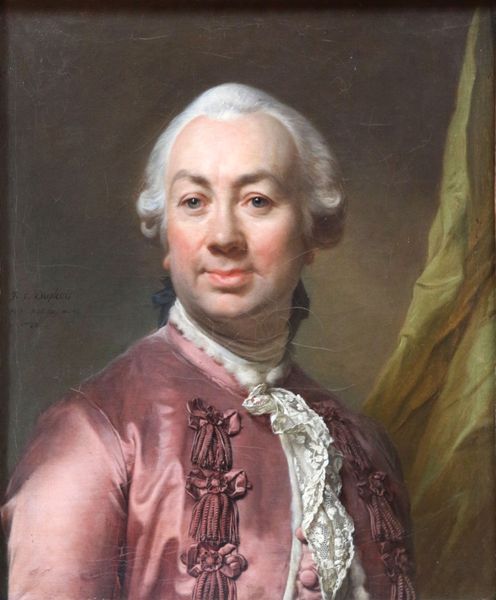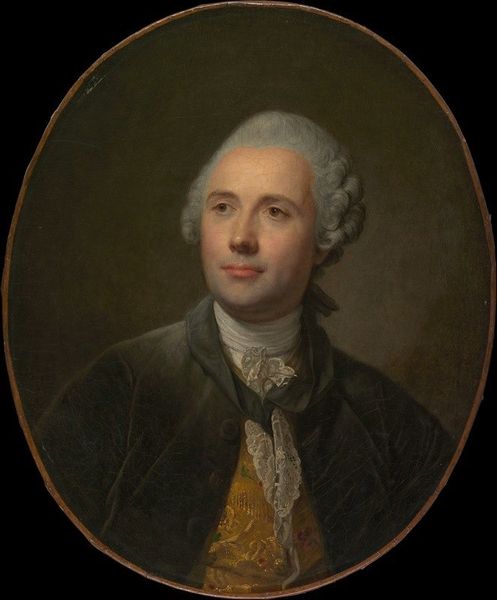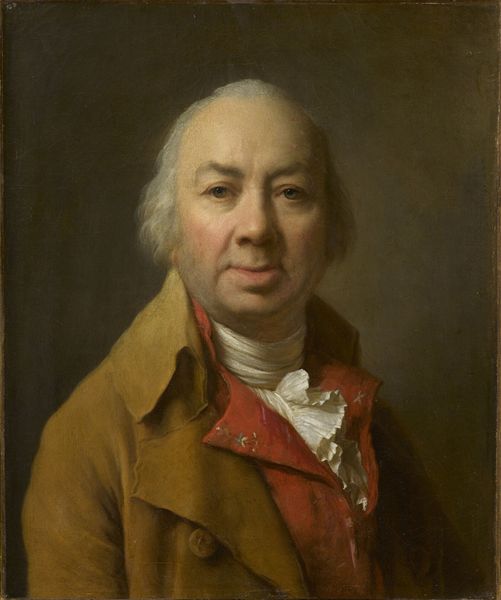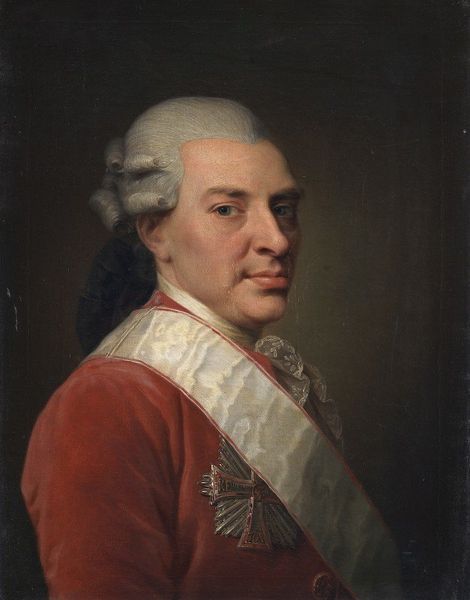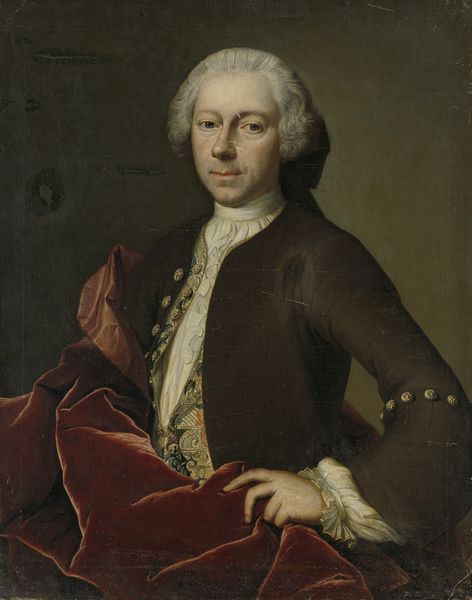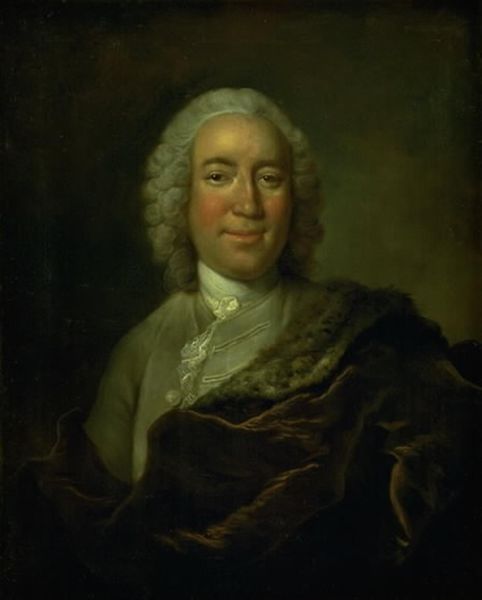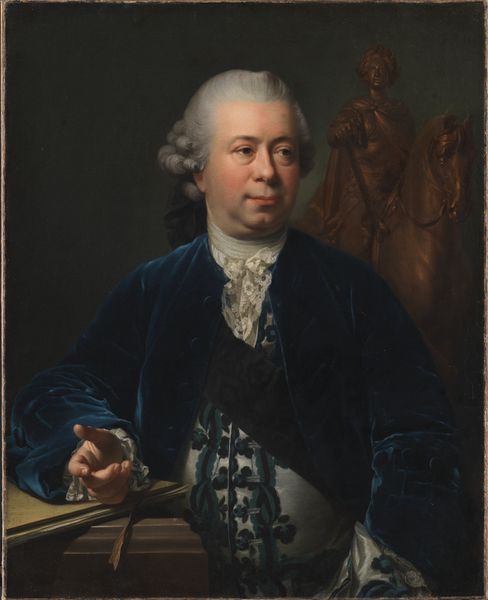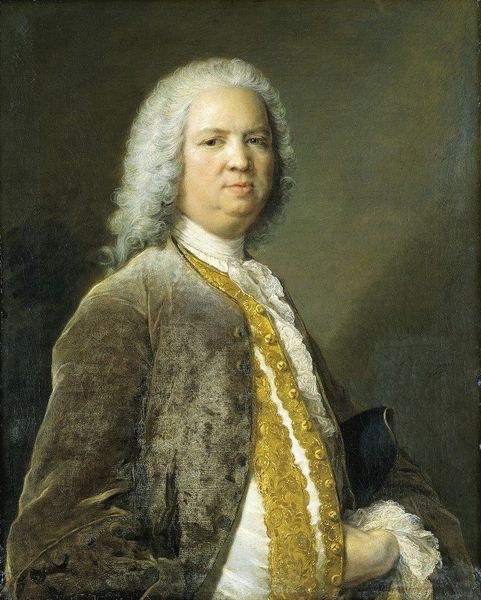
Copyright: Public Domain: Artvee
Curator: Standing before us, painted between 1788 and 1791, is Johann Baptist von Lampi the Elder's oil on canvas depiction of Stanisław Szczęsny Potocki. Editor: He looks every bit the part of an aristocrat. The crimson robe trimmed with fur…it's quite the declaration of power, even if rendered somewhat darkly. It’s giving me vibes of the late Baroque, almost verging on something much more somber. Curator: The portrait employs classical compositions; think of its connection to ancient Roman senatorial portraiture. The figure almost floats in a sea of darkness, an aesthetic choice mirroring how power often operates—elusive, untouchable, ever-present. And, don’t miss how the fur and sumptuous fabrics suggest material wealth, reinforcing his status. Editor: Right. The subject, Stanisław Szczęsny Potocki, was, in fact, a rather divisive figure in Polish history, especially regarding his involvement with the Targowica Confederation, an alliance with Russia against Polish reform. His image here is an interesting artifact—a study in self-representation, or, rather, the representation of power and wealth crafted by an elite in a crumbling world order. Curator: Symbols indeed have an ambivalent effect. Look at the way Lampi renders Potocki’s face: an attempt at conveying dignity and intellectual weight is very apparent. Yet, consider the historical chasm of judgement created with the passage of time. His stern visage has undergone a monumental change in how it now speaks to the contemporary viewer, its symbolic weight shifted and morphed, but the image forever resonates. Editor: It is a chilling portrait, made more so by what we now know about Potocki's actions. A permanent reminder of the personal ambitions that ultimately eroded any promise of collective agency. Lampi may have captured the exterior trappings, but perhaps unintentionally revealed a hollowness beneath all that finery. Curator: The symbolic narrative here—visible across centuries and value shifts—remains perpetually active. It offers crucial cultural continuity of self-deception among elites. Editor: Absolutely. It begs questions about what gets immortalized and the historical weight it carries, intended or otherwise. A complex portrait indeed.
Comments
No comments
Be the first to comment and join the conversation on the ultimate creative platform.

